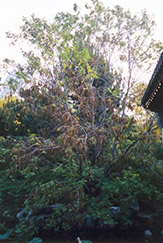It's all about ...
plants

Height: 50 feet
Spread: 50 feet
Sunlight:
![]()
Hardiness Zone: 6b
Description:
A significant feature for any spacious garden or park; large compound leaves mature to dark green with a feathery appearance; the green flowers are not as significant as the wonderful fruit that follows in long chains, elegantly draped
Ornamental Features
Caucasian Wingnut is primarily grown for its highly ornamental fruit. It features abundant showy lime green nuts in mid summer. It has attractive dark green deciduous foliage which emerges emerald green in spring. The glossy narrow compound leaves are highly ornamental but do not develop any appreciable fall colour. It is draped in stunning chains of green cup-shaped flowers at the ends of the branches in late spring.
Landscape Attributes
Caucasian Wingnut is a deciduous tree with an upright spreading habit of growth. Its average texture blends into the landscape, but can be balanced by one or two finer or coarser trees or shrubs for an effective composition.
This tree will require occasional maintenance and upkeep, and should only be pruned in summer after the leaves have fully developed, as it may 'bleed' sap if pruned in late winter or early spring. It has no significant negative characteristics.
Caucasian Wingnut is recommended for the following landscape applications;
- Accent
- Shade
- Hedges/Screening
Planting & Growing
Caucasian Wingnut will grow to be about 50 feet tall at maturity, with a spread of 50 feet. It has a low canopy with a typical clearance of 3 feet from the ground, and should not be planted underneath power lines. It grows at a medium rate, and under ideal conditions can be expected to live for 80 years or more.
This tree should only be grown in full sunlight. It prefers to grow in average to moist conditions, and shouldn't be allowed to dry out. It is not particular as to soil pH, but grows best in rich soils. It is somewhat tolerant of urban pollution. This species is native to parts of North America.
This plant is not reliably hardy in our region, and certain restrictions may apply; contact the store for more information.
